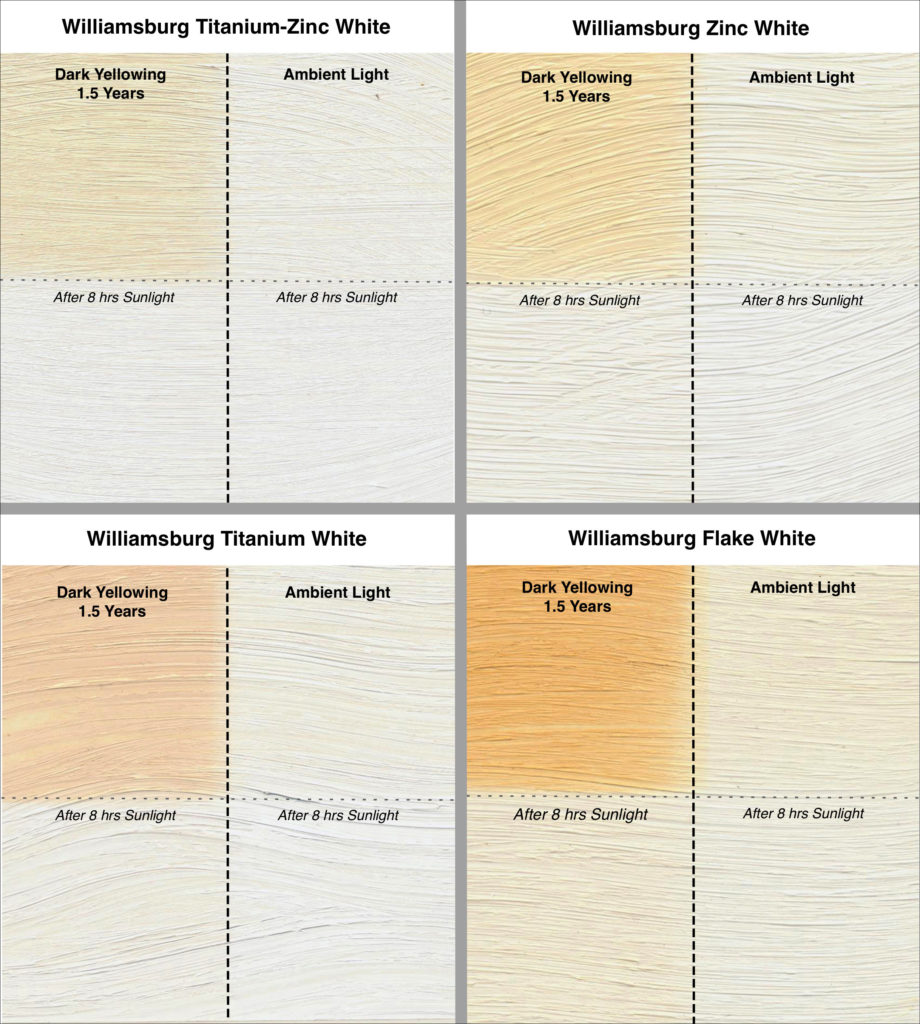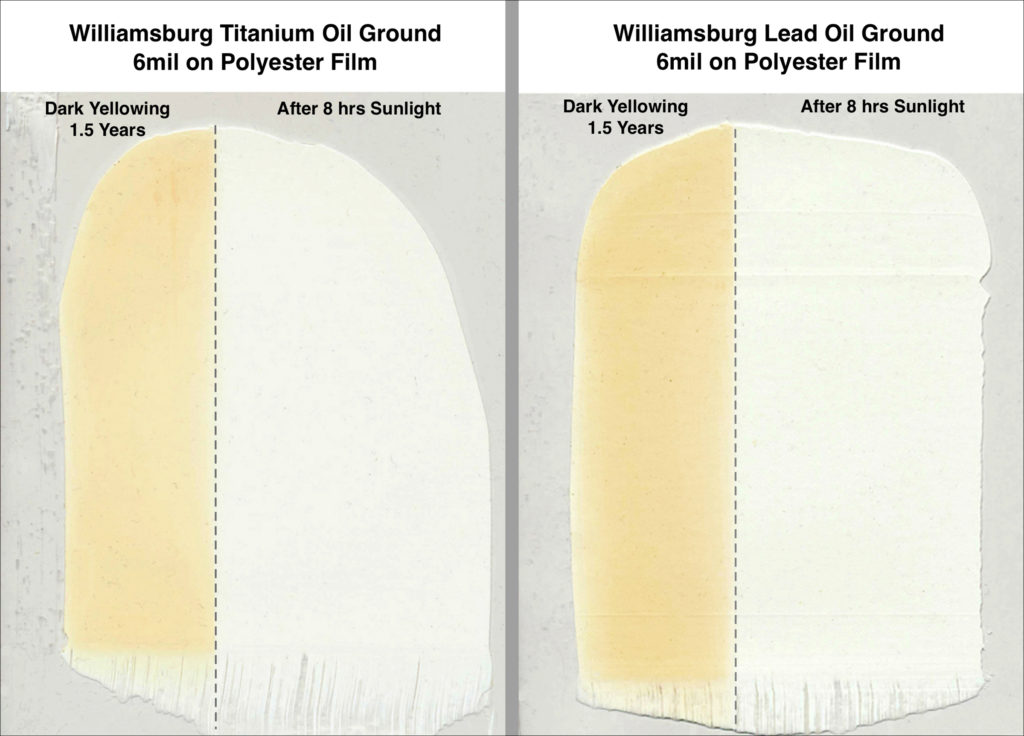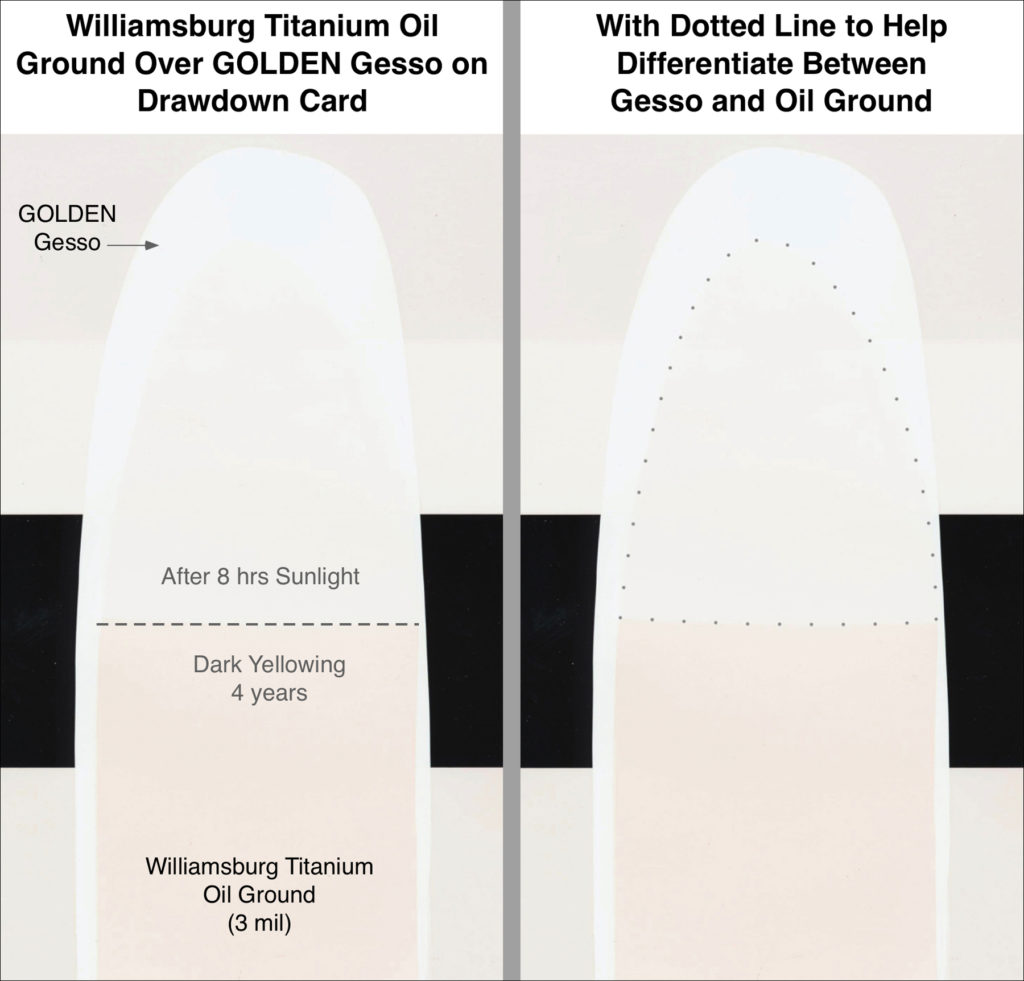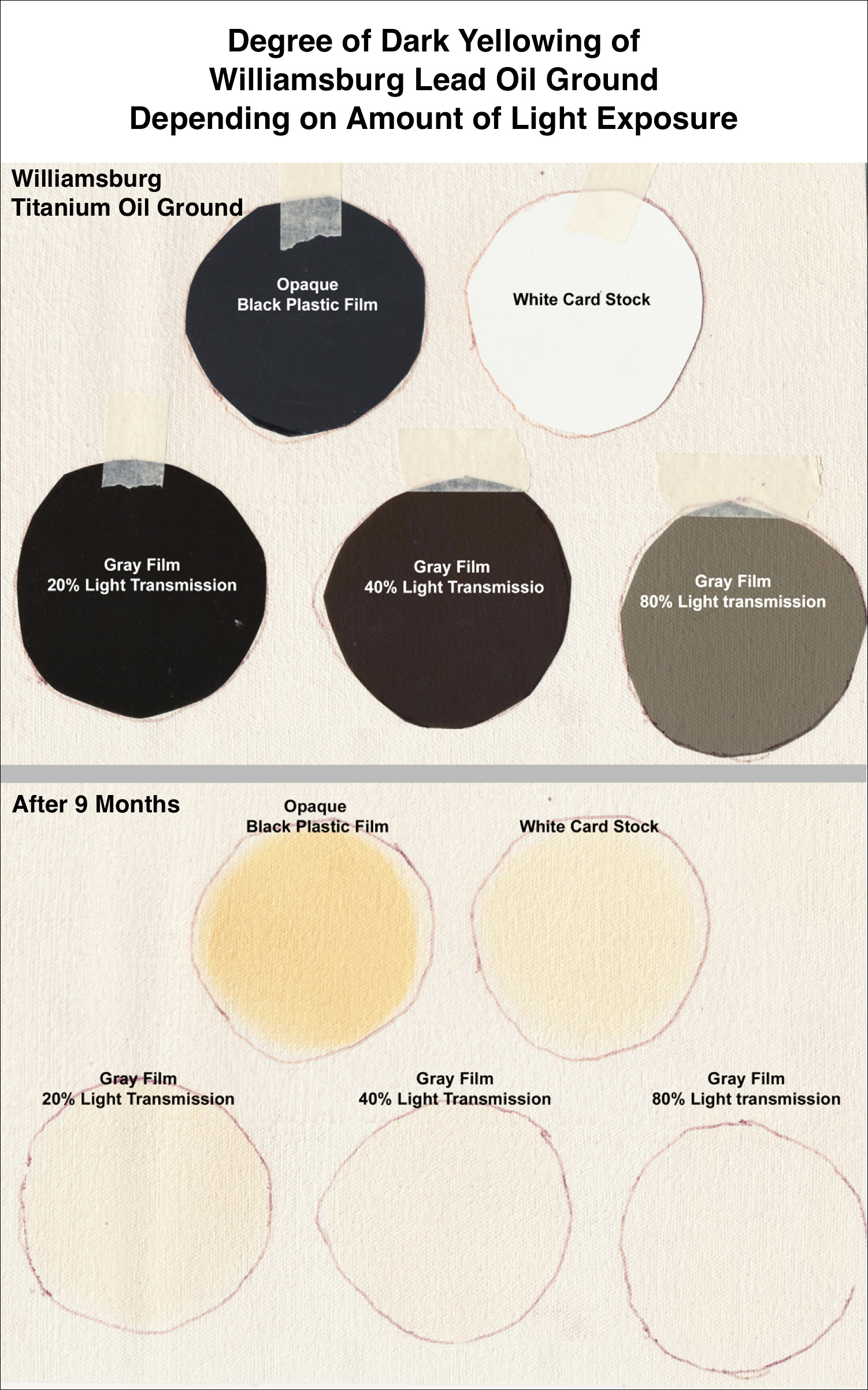Dark yellowing is the reversible, temporary yellowing that dried oil paint undergoes when stored in the dark or subdued lighting. While noted in many historical writings, most painters remain unaware of it and become surprised or concerned when they discover it happening to their own works. Which makes sense. With no other context to go by, it could easily feel like something has gone terribly wrong, or is aging prematurely before one’s eyes. What follows is an attempt to put some of this in context; to show multiple examples so you know what to expect, mention some of the research, and suggest things you can do if you discover this happening in your work or primed canvases.
Despite its long history, surprising little is known about the actual mechanism behind dark yellowing. We know it happens when oil paintings are kept in dimly lit or dark conditions, and that it can be easily reversed when exposed to light. However, the precise chemical process remains a mystery, at most attributed to the accumulation of some unknown ‘chromophore’ – a generic term for any molecule that happens to produce color. The phenomenon is most pronounced in linseed-based paints, although all drying oils will dark-yellow to some degree. And finally, at least among white paints, the actual pigments can matter, with a clear distinction between Lead, Titanium, Zinc, or a Titanium-Zinc blend.
Testing
In terms of scientific research, only a handful of past studies have focused on this topic, which we list in our references at the end. For the most part, despite some differences in approach and sample sets, the studies draw a similar picture: dried oil paint can seemingly undergo cycles of dark yellowing followed by bleaching indefinitely, with variations attributed to the length of dark storage, the age of the film, and the level and duration of light exposure. Joyce Townsend, in the most recent study (2011), suggested that works kept in dark storage or dim light for very long periods would most likely take a number of years of exposure to ‘typical gallery’ lighting to recover.
Our own tests have focused on standard white paints and oil grounds, brushed out or drawn down on different surfaces, without additions of mediums, and either placed completely in dark storage, or else kept in a room with lights on for approximately 12 hours a day, with one section always covered with an opaque strip of black plastic. The light in our application area would be the equivalent of a well-lit workplace or studio with 700 lux of illumination. At the end, all the pieces were exposed to a total of 8 hours of direct bright summer sun to get a sense of the maximum whiteness that could be recovered. Obviously we would strongly caution against exposing artwork to similar levels of direct sunlight, especially if there are any concerns about the lightfastness of your materials.
The first example arranges the four whites most painters use – Titanium, Titanium-Zinc, Zinc, and Flake – from the least to the most prone towards dark-yellowing. In each case, the left side was kept covered for one and a half years, while the right was left exposed. The bottom half of both sides was then exposed to sunlight:

The next set shows Williamsburg’s Titanium and Lead Oil Grounds drawn down over a polyester film:

The following shows a drawdown of our Titanium Oil Ground, at a thickness similar to a heavy sheet of paper, over acrylic Gesso:

In this last example, an oil primed canvas was brought out of dark storage and covered with discs that allow different amounts of light exposure: opaque black plastic, white card stock, and three translucent, neutral gray films rated to transmit 20%, 40%, and 80% of the light, while the surrounding oil ground was exposed to 100%. After 9 months the discs were removed. You can see how the results are directly tied to the amount of light:

Recommendations
If paintings or grounds become yellowed while kept in a dark area, remember that most if not all of this is temporary and reversible. It is a normal part of the medium and something that has been well-known for centuries. To reverse or prevent these effects, follow the following guidelines:
- As much as possible, keep pieces you are working on or planning to exhibit under normal lit conditions. Try to avoid stacking or turning them against the wall for a prolonged period.
- If pieces will be packed, crated, or stored in a way that light cannot reach the surface, make sure they are taken out and exposed to light with plenty of time to recover before showing. While a minimum of 30 days would be ideal, in truth any amount of exposure will help, so plan for as much time as possible.
- It is not recommended to expose works of art to strong direct sunlight for any length of time. Bright sunlight can be thousands of time stronger than indoor illumination, with considerably higher levels of UV. While normal studio lighting will take longer to reverse the effects of dark yellowing, it is far safer. And finally, the dramatic bleaching that can be achieved by direct sunlight will not last once the piece is brought indoors and adapts to a lower level of lighting.
As always, if you have questions please email us at [email protected], or call 800-959-6543 / 607-847-6154. Or better yet, simply ask in the comments below.
_ _ _ _ _ _ _ _ _
References
Henry W. Levison, “Yellowing and Bleaching of Paint Films”, Journal of the American Institute for Conservation, Vol. 24, No. 2 (Spring, 1985), pp.69-76
Christopher Tahk, “The Recovery of Color in Scorched Oil Paint Films”, Journal of the American Institute for Conservation, Vol. 19, No. 1 (Autumn, 1979),
pp. 3-13
Joyce H. Townsend, “The yellowing/bleaching behaviour of oil paint: further investigations into significant colour change in response to dark storage followed by light exposure”, ICOM-CC, 16th Triennial Conference, Lisbon, 19-23 September 2011. p. 1-10
Carlyle, L., N. Binnie, E. Kaminska, and A. Ruggles, “The yellowing/bleaching of oil paintings and oil paint samples, including the effect of oil processing, driers and mediums on the colour of lead white paint.”, ICOM-CC 13th Triennial Meeting Preprints, Rio de Janeiro, 22–27 September 2002, ed. R. Vontobel, 328–337. London: James and James.
M. H. van Eikema Hommes, “Discoloration in Renaissance and Baroque Oil Paintings. Instructions for Painters, Theoretical Concepts, and Scientific Data”, University of Amsterdam, PhD Thesis, 2002, pp. 16-46, Accessed August 10, 2017 (http://dare.uva.nl/search?metis.record.id=194612 )
